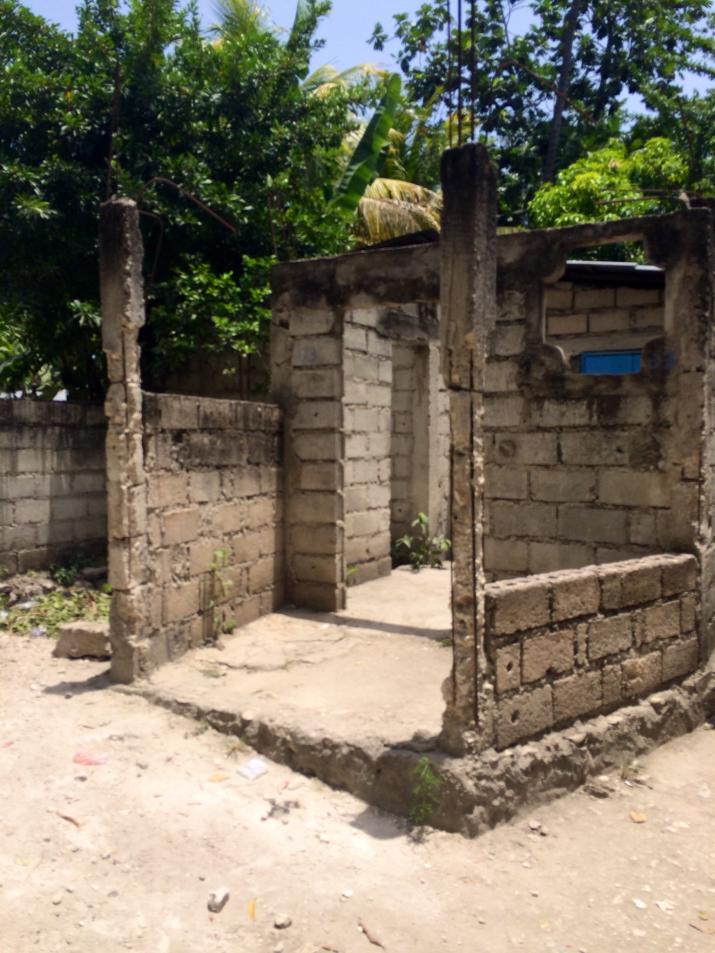
Many of the buildings in Haiti that were destroyed during the earthquake are in the same state they were four years ago.
Published July 1, 2014, last updated on October 5, 2017 under Voices of DGHI
By Elle Gault
Walking the streets of Léogâne there is something that is visible on every road, every street corner and almost every single house. Everywhere you see evidence of the earthquake that devastated the city that was at its epicenter.
The earthquake hit January 12, 2010 and left millions affected by it. Ninety percent of infrastructure was destroyed along with thousands of lives lost. After spending four weeks in Haiti I have heard all different stories about life immediately after the earthquake. One mother told me about the death of her child, another tells me how she and her family ran into the street to pray. Others recount looking around after the incident, looking at the rubble as if they had been in a war zone. While I cannot imagine living through such a catastrophe, Haitian people live everyday with constant reminders of the tragedy. There are still signs of the earthquake that are commonplace throughout the community; debris piled on the side of the road, USAID tents that were put up to house people and are still doing the same task today, but most of all, the attitude and expectations toward foreigners.
As relief aid flooded in, the way foreign aid workers handled themselves in the community would be critical in the way ex-patriates would be seen here for years. I have seen it first hand everyday in our surveys, when we manage the delicate task of interviewing people, asking personal questions and administering health readings. Overall I have seen how foreign aid workers have positively affected the community, providing housing and healthcare for people across the city.
While I have seen so many positives, which has allowed us to be welcomed with open arms, I have also seen the negative consequences of the foreign workers and aid or research that has been short term. Some aid organizations have created unsustainable projects, while others have completely abandoned their efforts, leaving the Haitian community in desperate need. Only once has a participant refused to answer our survey questions, and she explained to me that aid workers immediately after the earthquake had made her promises they did not fulfill. While this is not a common sentiment, it is one that some people agree with and has created a bias toward some aid workers. We are in the position of trying to find a balance through conducting research in a way that will help create sustainable programs and hopefully tangible benefits for the Haitian community, while also being transparent about our actions and our desired outcomes.
This can be extremely difficult. As a team our hopes are to give back to the community, but we also cannot give false hope or information. Like we have learned from our earlier predecessors, we have to be obvious about our limits, no matter how big our dreams are. For example, one of our projects is researching HPV vaccine acceptability that we hope can eventually help secure HPV vaccines in Haiti. While this research is great work and we hope to see these accomplishments, we have no way of guaranteeing the government’s cooperation or providing any certainty of offering the vaccines in Haiti. While doing these surveys, many participants eagerly ask me when I think the vaccine will arrive and when will they be able to start protecting their daughters from the most common form of female cancer in Haiti, a cancer that is almost a death sentence for many women here. The sad answer is that I don’t know. We want to set realistic expectations and limit false promises so that we can maintain a positive image for NGO’s and aid workers here for future generations. Our team hopes to help the Haitian people while also continuing the positive work that so many individuals and organizations have started here post-earthquake.


